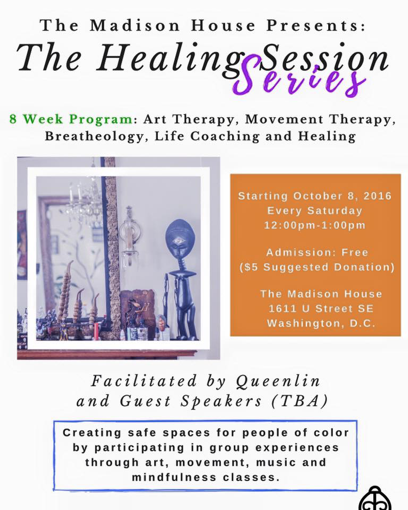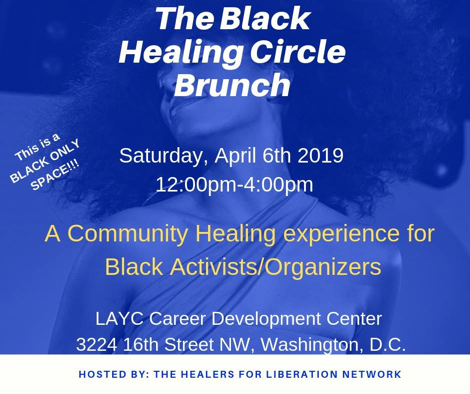February 24, 2020 | Lindsey Vance, ATR-BC, LPC
This post is part of the “Breaking the Chains of Racial Trauma in Therapy” blog series in honor of Black History Month, 2020.
“In healing, we recognize our common humanity, acknowledge the truth of past wrongs and build the authentic relationships capable of transforming communities and shifting our national discourse” (Montgomery Tabron, 2018, p. 3).
Growing up in a community that did not speak of mental health care or seeing a therapist, this idea of a career path was foreign to me. Explaining to my family that I was going to be an Art Therapist was even more so confusing, however I went on to be one. The privilege to work in various clinical and community-based settings afforded me the opportunity to recognize that I was not alone in my childhood stigma of misunderstanding and distrust for psychotherapy, but rather various clients of color shared this same belief (Clack, 2018).
Here are three lessons I’ve learned about changing the framework of therapy in my practice with clients of color.
1) How to Respond to Racial Trauma
I began working in communities that had been harshly impacted by various traumas, particularly housing instability and grief and loss. I was constantly telling myself “meet clients where there are” a phrase I became quite familiar with during my training at The George Washington University (GWU). The catch is that the metaphorical phrase shared throughout my education no longer just meant simply in a therapy session, but literally going into the community to convince clients to come in and see me at a sterile office to help them write their treatment plan.
When this did not work, I found myself writing treatment plans on the corner of a busy intersection, in fast food restaurants and in dark hallways of a public housing complex — all because someone in need was afraid that ‘the system’ was not working in his/her best interest.
This work in the community led me to Dr. Walter Smith’s (2010) model, The Impact of Racial Trauma on African Americans who penned a “psychological perspective that can be used to understand the impact of racial experiences on the functioning of African Americans in the United States”. I applied his model by helping clients to make meaning of their experiences, providing tools to increase self-regulations and properly analyze current situations, and to use visual narratives to develop an accurate account of their trauma using art so it will not be confused with other situations happening in the here and now. It was my way of bringing the clients in who were resistant to treatment. As I continued to do this work, I began to see that it was a lot easier to convince clients to visit a community driven site as opposed to clinical settings.
2) Engage in Community-based Practice
My findings led me to wanting to decrease stigmas and increase access by focusing on social justice and practitioners doing similar work. Recognizing the many roles I play as a clinician, art administrator, and through various other hats, I saw that community-based practice would mean juggling even more and create a need for strong boundaries (Ottermiller & Awais, 2016). I partnered with clinicians who were doing work to overcome barriers for clients of color to seek treatment. One of those partnerships was titled, “The Healing Session Series”. The purpose of the Healing Session Series is to provide a safe space for people of color to heal through group experiences and community based structures. The healing sessions invest in the health and safety of black and brown people, instead of investments in the criminalizing, caging, and harming of black and brown people.

3) Bring Art Therapy into Community Approved Spaces
I was able to use art therapy in a community approved site to reduce limitations of access to therapy. We used the word healing instead of therapy, various expressive therapy modalities, and addressed racial trauma by limiting the groups to people identifying ‘of color’ in order to bring together communities, in spaces where there was already a sense of safety felt.
Community members showed up and attributed their attendance to those factors as well as the financially friendly “pay what you can model”. I continue to offer art therapy workshops on sliding scale and in community spaces to reach those who have experienced great traumas and will likely not easily find their way into clinical settings. I also intentionally seek out and partner with other clinicians using the expressive therapies through Healers for Liberation directory and The S.P.A.C.E. in order to offer holistic alternative approaches and to reach audiences healing from racial trauma.

References
Clack, A. R. (2018). Women of Color Talk: Psychological Narratives on Trauma and Depression. Clack Associates
Montgomery Tabron, L. J. (2018). Restoring to Wholeness: Racial Healing for Ourselves, Our Relationships and Our Communities. Retrieved from http://racialequity.issuelab.org/resource/restoring-to-wholeness-racial-healing-for-ourselves-our-relationships-and-our-communities.html
Ottemiller, D. D. & Awais, Y. (2016). A Model for Art Therapists in Community-Based Practice. Art Therapy: Journal of the American Art Therapy Association. 33(3), 144-150.
Smith, W. H. (2010). The impact of racial trauma on African American. African American Men and Boys Advisory Board. Pittsburg, PA: Heinz Endowments. Retrieved from http://www.heinz.org/UserFiles/ImpactOfRacialTraumaOnAfricanAmericans.pdf
Lindsey Vance, ATR-BC, LPC
 Lindsey Vance is a board certified art therapist, licensed professional counselor, art administrator, fine artist, educator, supervisor, and consultant. She holds a BA in Psychology and Studio Art from the University of Maryland and a MA in Art Therapy, with an emphasis in Trauma and Counseling from The George Washington University. Lindsey’s professional expertise is trauma-informed care, specifically with community based populations experiencing housing insecurities.
Lindsey Vance is a board certified art therapist, licensed professional counselor, art administrator, fine artist, educator, supervisor, and consultant. She holds a BA in Psychology and Studio Art from the University of Maryland and a MA in Art Therapy, with an emphasis in Trauma and Counseling from The George Washington University. Lindsey’s professional expertise is trauma-informed care, specifically with community based populations experiencing housing insecurities.
She currently works as the Manager of Visual Arts for DC Public Schools; Grief Psychotherapist and Art Therapist for The Wendt Center for Loss and Healing; and as an Adjunct Professor for Bowie State University.
She often collaborates with diverse partners including museums, community based organizations, and schools to maximize the provision of services to clients. Lindsey has presented on art therapy, diversity and trauma to audiences that range from high school students to experienced professionals.
